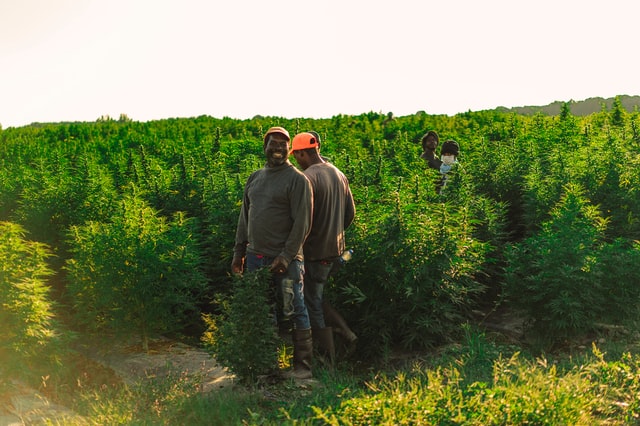This snippet has been taken from “Tree for the Yard and Garden” by “John Cushnie”. Conifers in the garden are usually planted to mark a property boundary so it’s easy to see how many disputes involving root damage occur. “Tree Trimming in Stockton CA” guides you on how to grow & make the garden look beautiful.
The numbers in parentheses indicate the hardiness zones. Conifers add color, shape, texture, and frequently, aromatic foliage to any garden. It is to their credit that most of them are evergreen, making a display for all 12 months. Those that are not, such as the Japanese and European larches, try very hard to make up for their shortcomings. Before leaf fall they turn soft, honey yellow and in early spring, before most deciduous trees are awake, their bright, fresh green foliage coats the branches.

Some detractors point to the insignificant flowers of conifers, but there are few seed pods to equal the magic of a pine cone or the blue, upright, candle like cone decorating Abies Koreana. The word conifer is derived from the Latin conus, a cone and ferre, to carry or bear, and in many such trees the cones are their most attractive feature.
Conifer bark is as diverse as the plants themselves and as attractive and interesting as any displayed by deciduous trees
Size Matters
In the past, conifers got a bad press and many gardeners were disappointed with them. The root cause was poor or bad labeling, with slow/growing species and varieties being sold as dwarf plants. A true dwarf species, such as junipers communis ‘Compressa,’ whose maximum height is about 32 in, will, in a short time, be swamped by Chamaecytaris lawsoniana ‘Ellwoodii’ for example, which was often sold as a dwarf variety when its actual habit is slow/growing and its full height as much as 26ft.
Ground covering conifers will travel for yards, rooting as they go. In the right site with lots of room to ramble, they are excellent. Wrongly planted, in an inadequate space they are nothing but trouble, smothering all that stands in their way.
Large conifers need thinking about and it is not a good idea to plant a potential monster just because you like it. By all means plant a specimen, but make sure space allows it to grow to its heart’s content. Then it will give you decades of pleasure and you’ll be secure in the knowledge that it will still be flourishing in a few hundred years. The secret of success lies in leaving the allocated space un-planted, with nothing to crowd and squeeze the tree.
Finding the Space
There is no garden too small for conifers. Many will grow for years in the confines of stone trough. True dwarf varieties are happy in containers. Slow/growing conifers will add shape and texture to mixed shrub beds.
Under planting conifers with suitably sized plants can provide carpets of color. One of the traditional and most successful combinations is a mixed conifer and heather planting, using autumn, winter, and spring flowering heather species
Specimen weeping plants are spectacular planted in grass. For winter color on a grand scale, you can’t improve on the display of blue and gold foliage from a mixed planting of towering conifers.
Planting
Unlike deciduous trees, evergreens are active and growing all year. They slow down in winter but still draw in water and transpire through the foliage. This is worth remembering when planting and transplanting.

Small container grown conifers may be planted at any time of year, provided the root ball is moist and the planting hole is wet. A square planting hole slightly deeper than the root ball will encourage the plant’s root to spread out instead of continuing to curl round in the shape of the ball. Tease out the roots prior to planting so that they will grow into the surrounding soil.
Larger plants and those to be transplanted should be moved in spring or autumn when the soil is warm. This aids rooting and there is also a good chance of ratio to reduce excess transpiration. Keep the root area well watered for the first season but avoid water-logging the soil.
When a stake is needed to prevent the tree leaning, use a short one. Position the tree tie close to the ground to hold the stem: this allows the head of the conifer to move with the wind and strengthen the roots and trunk.
Pruning
Many conifers benefit from pruning. Those plants grown for their juvenile foliage sometimes produce branches which have reverted to the original adult foliage of the parent plant. If these are not cut out as soon as you spot them, they will eventually weaken the tree and the whole plant will revert.
Some young trees are prone to producing double leaders. Removing the weaker short is necessary to keep the shape of the plant.
Most conifers will not produce new growth if pruned hard, as they usually have only an outer shell of evergreen foliage. The center is brown and dead, so where green foliage has died, it won’t regrow. The exceptions to this rule are yew, a few junipers, and the fast growing Leyland cypress. Even when cut to the stump yew will survive and regrow as good as ever. Cypresses will withstand being severely reduced in height, growing away again to become an equally tall problem.
Conifer hedges and topiary shapes will only be maintained if they are regularly clipped to build up a dense, tight mass of leafy twigs.
Flowers and Cones
The male flowers of a conifer are usually shaped like either a catkin or a cone. They are often referred to as male cones but are, in fact, clusters of flowers. Female cones start out as clusters of flowers, hardening up into cones to hold the young seed. A cone may be thought of as the fruit or berry of the conifer. Yew and juniper do actually produce single seed berries rather than cones.
In some conifers the seed takes a year to mature. Others may take up to two years before the cone opens to release the seed.
All too often the flowers of the conifer are taken for granted. Sometimes they are small and not conspicuous or they are high up on the tree and out of sight. Usually they are beautiful in shape and color. Many of the flowers are bright red or yellow and they may take the form of pendulous catkins or cones. Most conifers produce their flowers, both male and female, in spring, but cedars flower in early autumn, when the male flowers release clouds of yellow pollen.
Continue reading on Woody plants in the garden
